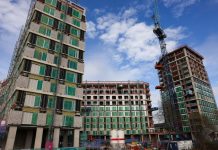2014 was a good year for commercial property, with IPD total returns rising above 20% and confidence in evidence almost across the board. So what happens in 2015? Here are our predictions for next year.
1. Growth will move back to a sustainable pace
While the punchy rebound seen by commercial property in 2014 is encouraging, the recent figures from IPD are not sustainable in the long-term. The total return numbers may accelerate a little further, but we expect them to drop back early in 2015, perhaps picking up again in the autumn on rental growth. This will be due to slower capital growth as investors acknowledge that prices have rebounded from the double-dip period. The slow and methodical business of increasing value by asset management then begins. Note though we are predicting a deceleration not a decline.
2. The UK funds are set to play a bigger role
Overseas capital has been a growing force in the UK in recent years, and in central London it has eclipsed the UK institutions. However, 2014 has seen a surge of new money flowing into UK retail property funds – see figure 2 – in fact it is possible this could prove to be a record year. Consequently, the UK unit funds will be more active in the market in 2015. We expect them to be targeting regional property, given pricing in central London is now built around the considerations of international not domestic buyers. The UK funds are also veterans in the regional markets, so are the investors best placed to go furthest up the risk curve by developing speculatively. If developing in the regions without a pre-let sounds bold, remember that a scheme commencing in 2015 is unlikely to arrive before 2017. By this time many regional occupier markets (some of which have seen little building since 2007) could be very under supplied with modern available stock.
3. The office market could see broad-based rental growth
A year ago one could only speak meaningfully of rental growth in central London, but in 2014 we saw it re-emerge for prime in many M25 towns, Birmingham, Glasgow, and Leeds. The regional breakdown for Markit’s UK purchasing managers index shows the economic recovery has transmitted well to the wider UK in the last year. Consequently, we expect office rents to rise across the regional city centres in 2015, and lack of development to date could quickly migrate rental growth from prime to secondary.
4. The election may have less impact than many expect
With less than six months to go it remains impossible to call the outcome of the general election other than to say another coalition looks likely. However, in 2010 an inconclusive outcome and post-election horse trading was a novelty for much of the electorate (and thus a source of uncertainty); in 2015 it will not be. Also, some of the more crowd-pleasing and riskier policies may well be watered down as part of negotiations between parties when they broker the next coalition. There is further austerity to come post-election, but the spending cuts of the Cameron / Clegg administration did not prove as damaging to growth as many feared. The same will probably be true of the next round of savings. Also, there will be election upside for property, such as the drive to build up a ‘Northern Powerhouse’. Manchester could offer opportunities given the proposed new technology institute announced in the budget, and similarly the new theatre will be good for local retail and leisure.
5. Retail to continue to polarise between destination and convenience
During 2014 we have seen the emerging landscape of retail in the digital age. This consists of a polarisation between ‘destination’ and ‘convenience’. Destination retail is part of a day out, where cafés, restaurants, and leisure become an integral part of the mix. Meanwhile the army of supermarket convenience outlets, supported by click-and-collect, are breathing life back into the local high street. Ultimately there should be footfall benefit for surrounding units, and we see the high street moving towards a mix of café culture and ‘artisan’ retail.




















